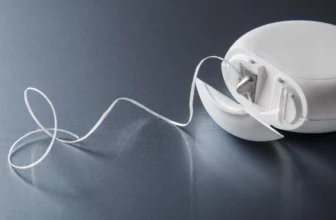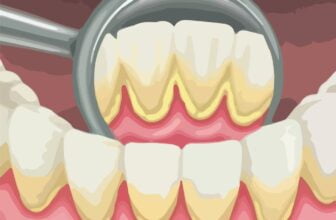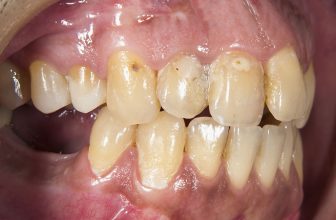Scaling and Root Planing (Deep Teeth Cleaning)
A teeth cleaning is a treatment in which dentist cleans between the gums and the teeth down to the roots. In this treatment, the dentist cleans the tooth, gums, and sides of the teeth properly. To have the complete treatment patient needs several visits to the doctor. This is different from regular cleaning because this is designed specially to treat the gum problems and to stop them. The technical term used for this is “root scaling and planning”.

Who is Dental Hygenist?
A dental hygienist is a person who is trained in cleaning teeth. This person is a licensed dental professional within their country of practice. They can work independently or they can work with other dentists to provide full oral care treatments. They have their professional training and academic study in such a field that focuses only on the treatment of oral diseases.
How Much It Hurts During Deep Cleaning?

A lot of people fear to go to the dentist for any treatment as they feel that it hurts. Yes, it is right that it hurts but it happens only in some cases and not in all. In deep cleaning treatment, it doesn’t hurt at all. There is no pain in removing plaque from the teeth and gums. Actually, it depends on person to person. Those persons whose gum pockets are not too deep they feel very little or no pain at all during the deep cleaning. On the other hand, the persons whose gum pockets are deep they feel a lot of pain during treatment. Moreover, the dentist can use anesthetics which completely numb the area and we do not feel that something is happening in our mouth. After the procedure, there may be some pain but that pain is bearable. Moreover, if there is any soreness or sensitivity in the gums then that can also be cured with the help of medicines.
What to Eat After Deep Cleaning?
After deep cleaning, there may be soreness in the gums so it becomes important to eat only those things which do not affect the impact of treatment. Local anesthesia is injected around gums that results in numbness. A person has to avoid sticky and hard things such as ice cubes, chips, and nuts. The person has to eat pasta, soups, cheese, yogurt, mashed potatoes or any soft food items. Moreover, make sure to drink a lot of water to keep yourself hydrated which helps in the healing process. A person can eat whatever he/she can tolerate but do not eat anything for the next 48 hours of the treatment. The person should also avoid sugary drinks because it may be harmful to recently cleaned teeth.
Calculus on Teeth

Calculus, also known as Tartar, is a crusty deposit on the teeth which can cause discoloration. It is such a strong bond with gums and teeth which can only be removed by a dentist. If plaque is not removed then minerals in saliva combine with plaque and turn into Calculus. The surface of it is hard making it difficult to remove with a toothbrush.
Dental Teeth Cleaning Tools
There are many dental cleaning tools used by dentists to clean our mouth and to perform the treatment. Here are some most important tools which are used by dentists:

Mirror
This is one of the main tools used by dentists. Without this tool, it becomes difficult for the dentist to see at the back of the mouth. With the reflection of light on the mirror, a dentist can examine the infected areas easily. Some mirrors are in a concave shape which helps them to see even the smallest deposits in the teeth. Most of the mirror handles are made up of stainless steel.
Scalers
It is a metal tool used to clean the plaque and tartar from the teeth. The pointed end of this instrument is used to point the gum line and blunt end is used to reach below the gum line without infecting gums.
Polishers
These tools are used to polish the teeth after the treatment. After removing plaque and tartar from the teeth dentists use polishers to whiten the teeth. It is fitted on the small electric rotary tool. This can easily work on uneven surfaces and clean the teeth properly.
Begin with a Rinse
This is one of the most important tools used by professional hygienists. Before starting any treatment if the dentist uses a pre-procedural rinse then it will kill 99% of germs. In this way, it becomes safe for both patients and doctors to start the procedure.
Deep Dental Cleaning Necessary
It is very necessary to keep care of teeth and gums so deep cleaning of teeth should be performed if they are infected. After the checkup, a doctor can tell whether a person needs a deep dental cleaning or not. If the gums of a person are in bad shape then deep cleaning becomes necessary. When there is space between the gums called pockets and these pockets are filled with tartar then only one way to treat it is a deep cleaning. When harmful bacteria can no longer be removed by brushing then deep cleaning can remove it. So, for the good health of teeth and gums, it is necessary to have deep cleaning whenever it is required.
Aftercare Tips
The person should adopt the following tips after undergoing deep cleaning teeth procedure:
Don’t Eat in Numbness
If your deep cleaning process involved the use of anesthesia, then it becomes imperative to wait until you can feel every part of your mouth meaning until the numbness has left your mouth completely. Eating in numbness can interrupt the healing process causing damage to gums.
Avoid Certain Foods
The food items like acidic foods (orange, lemon, tomato), challenging foods (burger, pizza), and food with tiny pieces (nuts, popcorn) should be avoided as all these can interrupt the healing process.
Over-the-counter Medicines
If you are feeling a lot of pain or swelling in your gums, medications like Ibuprofen, Advil, or Tylenol can help. Consume these only with the advice of a doctor.
Antibiotics
You can take some antibiotics to prevent infection in some cases. Make sure that you are taking these tablets as per the instructions of the doctor.
Swelling and Discomfort
Teeth become more sensitive after undergoing a deep cleaning procedure. This sensitivity can last up to several weeks giving the experience of slight bruising. In this situation, icing the affected area can be helpful.
Minor Bleeding

Up to 48 hours of a deep cleaning process, some pinkish tinge can be observed in saliva. In this case, do not rinse your mouth during the first 24 hours and avoid hot foods.
Rinse with saltwater
Rinsing your mouth 4-6 times a day with salt water can help in cleaning the area and making it free from infection. Try not to rinse within the first 24 hours.





